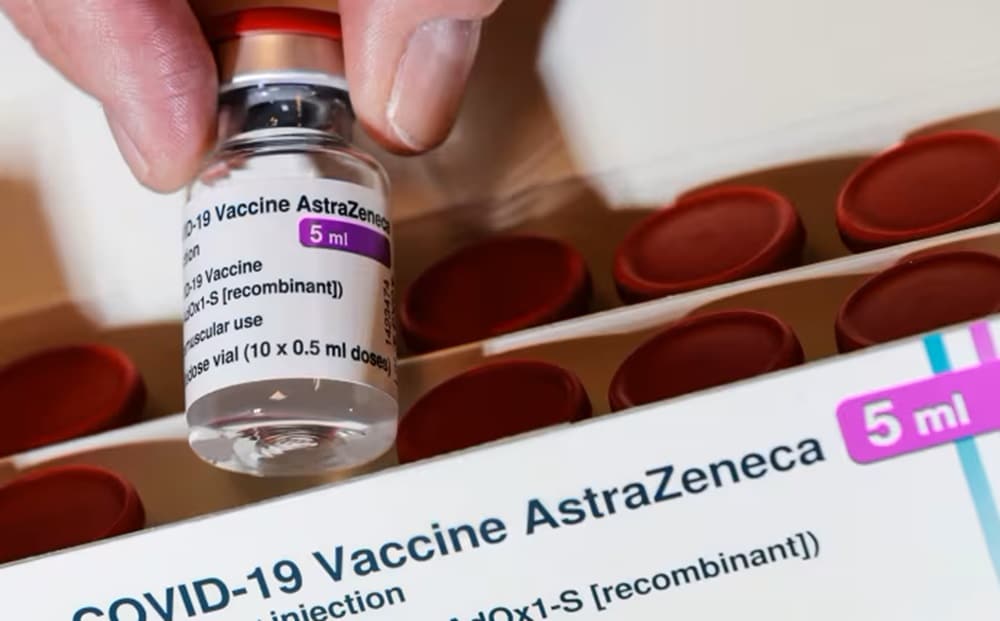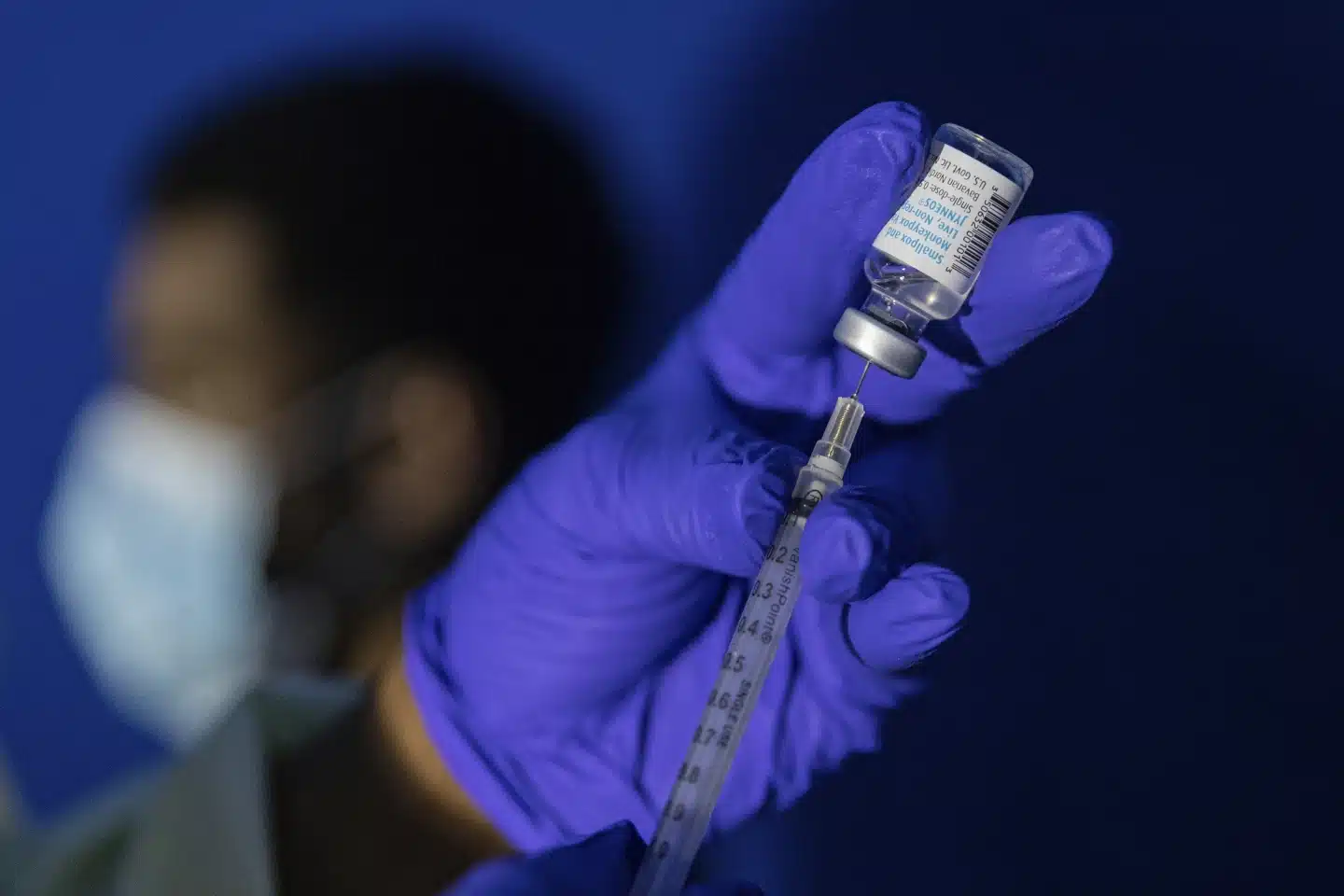Health
Researchers Reveal Masturbate in a Month Can Reduce their Prostate Cancer Risk

(VORNews) – Men should masturbate at least twice a month to reduce their prostate cancer risk, according to a recent study. Experts say that despite the popularity of viral phenomena such as No Nut November, it’s a good idea to enjoy ‘intimate time’ regularly to prevent disease.
What is the number of times? It has been revealed that masturbation at least 21 times a month could lower the risk of prostate cancer, according to new research at IFLScience.
According to research published in European Urology, this could reduce the risk by up to a third.
Masturbate in a month can reduce their prostate cancer risk
According to the findings of the research, it might provide a health benefit comparable to that of running and eating healthily. Over 18 months, the behavior of the men who participated in the survey was observed.
In all, 31,925 men took part in the experiment. Additionally, their findings indicate that masturbation regularly allowed the removal of pollutants from the body. Not only is this study and the opinion of experts supporting the benefits of frequent masturbation among males, but it is also not the only study.
Dr. Rena Malik, a urologist, asserts that there is no concrete proof to support the claim that participating in No Nut November is beneficial to one’s physical and emotional health, even though many individuals who take part in the event make this claim.
Formerly, Malik gave an interview to Insider in which he stated that the benefits of ejaculating include the alleviation of stress and the potential lowering of the risk of developing prostate cancer.
Malik referred to a research that was published in European Urology in 2016. The study found that men in their 20s and 40s who ejaculated more than 21 times per month had a lower risk of being diagnosed with prostate cancer compared to men in their age group who ejaculated considerably less frequently.
One of the topics that the urologist examined was the possibility that masturbation may result in a decrease in athletic performance. He ultimately rejected this theory, claiming that there was no evidence to support it.
Trending News:
WHO Launches Appeal for 1.5 Billion Dollars for 2024 Emergencies
WHO Launches Appeal for 1.5 Billion Dollars for 2024 Emergencies
U.K News
AstraZeneca Removes Covid-19 Vaccine from the UK Market

AstraZeneca is pulling its Covid-19 vaccine from the UK market less than four years after its debut, citing a “surplus” of vaccines targeting newer strains and declining demand.
On Wednesday, AstraZeneca stated that while it was “proud of the role Vaxzevria played in ending the global pandemic,” the company would no longer manufacture or supply the medicine due to a “surplus of available updated vaccines.”
The decision marks the end of the road for the vaccine, which was developed in partnership with experts at Oxford University within months of the pandemic’s breakout. It was authorized in the UK in late 2020, and over 3 billion doses have been distributed since its debut.
Unlike rivals Pfizer, BioNTech, and Moderna, AstraZeneca initially used a non-profit approach for its vaccine, selling it “at cost” as part of an agreement with Oxford. The medication was critical in ending the epidemic. However, its deployment was marred by rare cases of blood clotting and disagreements with the European Union over access to medicine.
“According to independent estimates, over 6.5 million lives were saved in the first year of use alone,” AstraZeneca stated, adding that additional COVID-19 vaccines have since been produced, reducing sales of its own medicine.
First Vaccine Approved in the UK
The announcement comes after the pharmaceutical company sought in March that the European Union withdraw its marketing authorization for Vaxzevria, which was granted on Tuesday.
AstraZeneca’s vaccine has been supplanted by mRNA-based vaccines produced by BioNTech/Pfizer and Moderna, which are now the most widely used worldwide.
According to the company’s full-year figures, AstraZeneca’s jab generated only $12 million in sales in 2023, compared to nearly $4 billion in 2021. In late 2021, AstraZeneca signed its first for-profit arrangements, claiming the pandemic had entered an “endemic phase.”
The vaccine was approved in the United Kingdom in December 2020 and the European Union in January 2021, but it was never approved in the United States, where authorities criticized the company’s presentation of data on vaccination efficacy.
Overall, the vaccination was safe and effective, but confidence in it dipped in 2021 following a string of rare blood-clotting occurrences, prompting European authorities to restrict its use among younger people.
Jamie Scott is suing the firm, alleging that taking the vaccine caused him to develop a major blood clot. If held accountable, the UK government’s vaccine damage payment plan would compensate for any damages. The business stated that the removal was unrelated to the uncommon blood clotting incidences.
AstraZeneca stated: “We will now work with regulators and our partners to align on a clear path forward to conclude this chapter and significant contribution to the Covid-19 pandemic.”
About AstraZeneca
AstraZeneca is a global pharmaceutical corporation based in Cambridge, England. It develops and manufactures various medications to treat various medical ailments. During the COVID-19 epidemic, the business earned headlines for its collaborative efforts to create a vaccine with Oxford University.
Vaxzevria COVID-19 vaccine was one of the first vaccines approved for emergency use worldwide. Despite initial issues with efficacy data and worries about potential adverse effects, the vaccination proved successful in preventing severe illness and death from COVID-19. It was essential in vaccination campaigns throughout Europe and the rest of the world.
Their line of pharmaceuticals extends beyond the COVID-19 vaccine to include cancer, cardiology, respiratory, and metabolic illnesses. The corporation invests substantially in R&D, hoping to bring breakthrough therapies to market. It operates in over 100 countries and employs tens of thousands worldwide.
AstraZeneca has experienced numerous controversies and legal challenges, including litigation involving drug pricing and marketing activities. However, it remains a key player in the pharmaceutical sector, strongly emphasizing scientific research and global health programs. The company’s response to the COVID-19 epidemic has strengthened its position as a major contributor to global public health efforts.
Source: The Financial Times
Health
A Subset Of Alzheimer’s Cases May Be Caused By Two Copies Of A Single Gene, New Research Shows

Washington — For the first time, researchers have uncovered a genetic variant of Alzheimer’s disease among people who inherit two copies of a concerning gene.
Scientists have long known that a gene known as APOE4 is one of numerous factors that can increase people’s chance of developing Alzheimer’s disease, including just growing older. The great majority of Alzheimer’s cases develop after age 65. However, new research published on Monday reveals that for people who carry two copies of the gene, it is more than a risk factor; it is an underlying cause of the mind-robbing disease.
The findings have “profound implications,” according to Dr. Juan Fortea, who led the study at the Sant Pau Research Institute in Barcelona, Spain.
Symptoms can appear seven to ten years earlier than in other elderly people who get Alzheimer’s.
An estimated 15% of Alzheimer’s patients have two copies of APOE4, which means that those instances “can be tracked back to a cause, and the cause is in the genes,” according to Fortea. Until recently, hereditary variants of Alzheimer’s were thought to be the only types that struck at considerably younger ages, accounting for less than 1% of all cases.
According to scientists, the findings highlight the need of developing medicines targeting the APOE4 gene. Some doctors will not provide Leqembi, the only treatment found to modestly reduce the disease, to people with the gene pair because they are more likely to experience a dangerous side effect, according to Dr. Reisa Sperling, a study coauthor at Harvard-affiliated Brigham and Women’s Hospital in Boston.
Sperling is looking for ways to prevent or at least delay Alzheimer’s, and “this data for me says wow, what an important group to be able to go after before they become symptomatic.”
However, the revelation does not imply that people should race to get a DNA test. “It’s important not to scare everyone who has a family history” of Alzheimer’s because this gene combination isn’t responsible for the majority of instances, she told The Associated Press.

San deigo – VOR News Image
How Does Genetics Affect Alzheimer’s?
Alzheimer’s disease affects more than 6 million Americans and millions more throughout the world. A few genes are known to create rare “early-onset“ forms, which are mutations passed down through generations that cause symptoms to appear unusually early, before the age of fifty. Some occurrences have also been connected to Down syndrome.
However, Alzheimer’s disease most typically strikes after the age of 65, particularly in the late 1970s and 1980s, and the APOE gene, which also affects how the body manages lipids, has long been thought to have a role. There are three major variations. Most people have the APOE3 variation, which does not appear to raise or decrease Alzheimer’s risk. Some people carry APOE2, which offers some protection against Alzheimer’s.
APOE4 has long been identified as the most significant genetic risk factor for late-life Alzheimer’s, with two copies being more risky than one. Approximately 2% of the world’s population is predicted to inherit one copy from each parent.

Brain Space – VOR News Image
Research suggests a cause for a subset of Alzheimer’s.
To better comprehend the gene’s function, Fortea’s team analyzed data from 3,297 brains given for research and over 10,000 patients in Alzheimer’s studies in the United States and Europe. They investigated Alzheimer’s symptoms and early warning signs, such as sticky amyloid in the brain.
According to a study published in the journal Nature Medicine, people with two APOE4 copies accumulated more amyloid at age 55 than those with one copy or the “neutral“ APOE3 gene type. By age 65, brain scans revealed considerable plaque buildup in nearly three-quarters of those double carriers, who were also more likely to develop Alzheimer’s symptoms at that age rather than in their 70s or 80s.
Fortea stated that the disease’s basic biology was comparable to young inherited kinds.
It appears to be “a familial form of Alzheimer’s,“ according to Dr. Eliezer Masliah of the National Institute on Aging. “It is not just a risk factor.”
Importantly, not everyone with two APOE4 genes develops Alzheimer’s symptoms, and researchers need to figure out why, Sperling said.
“It’s not quite destiny,“ she explained.

NPR – VOR News Image
How the new findings may affect Alzheimer’s research and treatment
The medicine Leqembi works by removing some sticky amyloid, but Sperling said it’s unclear whether carriers of two APOE4 genes benefit because they are at a higher risk of the drug’s side effects, which include hazardous brain swelling and hemorrhage. One research topic is whether they might benefit from starting such medications sooner than others.
Masliah stated that other study tries to produce gene therapies or medications that precisely target APOE4. He believes it is especially critical to study APOE4’s impact across varied communities, as it has been investigated primarily in white people of European heritage.
Gene tests are now solely used to determine whether someone is a candidate for Leqembi or to enroll in Alzheimer’s research, particularly investigations of potential disease prevention methods. According to Sperling, the persons who are most likely to carry two APOE4 genes have parents who both developed Alzheimer’s disease in their 60s rather than 80s.
SOURCE – (AP)
Health
A New Form Of Mpox That May Spread More Easily Found In Congo’s Biggest Outbreak

KINSHASA, Congo – Congo is battling to contain its largest mpox outbreak, and scientists believe a new strain of the disease discovered in a mining town could spread more easily among people.
Congo has reported over 4,500 probable mpox cases and over 300 deaths since January, substantially double from the same period last year, according to the World Health Organization. Congo recently declared the outbreak a national health emergency.
An analysis of patients hospitalized between October and January in Kamituga, eastern Congo, suggests that recent mpox genetic mutations are the result of the disease’s continued transmission in humans; this is occurring in a town where people have little contact with the wild animals thought to naturally carry the disease.
AP – VOR News Image
A New Form Of Mpox That May Spread More Easily Found In Congo’s Biggest Outbreak
“We’re in a new phase of mpox,” said Dr. Placide Mbala-Kingebeni, the study’s principal researcher, who added that it would soon be submitted to a journal for publication. Mbala-Kingebeni is the head of a lab at Congo’s National Institute of Biomedical Research that researches disease genetics.
Mbala-Kingebeni stated that the majority of patients’ lesions are milder and located in the genitals, making the disease more difficult to identify. In earlier African outbreaks, lesions were usually found on the chest, hands, and feet. He also noted that the new type seemed to have a decreased fatality rate.
In a report on the worldwide mpox situation published this week, WHO stated that the new strain of the disease may necessitate a new testing technique to detect mutations.
With specialists pointing out that fewer than half of Congo’s mpox patients are tested, Mbala-Kingebeni stated: “The risk is that unless patients themselves come forward, we will have a silent transmission of the disease and nobody will know.”
AP – VOR News Image
A New Form Of Mpox That May Spread More Easily Found In Congo’s Biggest Outbreak
According to Mbala-Kingebeni, the majority of people become infected through intercourse, with sex workers accounting for almost one-third of all mpox cases. It wasn’t until the 2022 worldwide mpox emergency that scientists discovered the disease was transmitted through sex, with the majority of cases affecting gay or bisexual men. WHO confirmed the first sexual transmission of mpox in Congo in November.
Mpox is classified into two types, or clades, related to smallpox and found in central and western Africa. Clade 1 is more severe, killing up to 10% of those afflicted. Clade 2 sparked the 2022 outbreak, and more than 99% of those afflicted survived.
Mbala-Kingebeni and colleagues stated they discovered a novel type of clade 1 that could be responsible for over 240 cases and at least three deaths in Kamituga, a location with a large transitory population going throughout Africa and beyond.
Dr. Boghuma Titanji, an infectious diseases expert at Emory University who was not involved in the study, expressed alarm about the new mutations.
“This suggests the virus is adapting to spread efficiently in humans and could cause some pretty consequential outbreaks,” she went on to say.
Vaccines and treatments were used to control mpox epidemics in the West, but few were accessible in Congo. Congo’s minister of health has authorized the deployment of vaccines in high-risk provinces, according to Cris Kacita Osako, coordinator of Congo’s Monkeypox Response Committee. He added officials are in talks with donor countries such as Japan to help pay for the doses.
“Once a sufficient quantity of vaccines is available … vaccination will be implemented as part of the response,” Kacita Osako, the minister of health, stated.
Dr. Dimie Ogoina, an mpox expert at Niger Delta University, believes the new findings are a frightening reminder of a previous — but distinct — outbreak.
AP – VOR News Image
A New Form Of Mpox That May Spread More Easily Found In Congo’s Biggest Outbreak
“The notable spread among sex workers is reminiscent of the early stages of HIV,” he said, adding that biases about treating sexually transmitted infections and persons with mpox’s unwillingness to speak up were concerning.
Dr. Michael Ryan, WHO’s emergency chief, stated last week that, despite the continuous spread of mpox in Africa and elsewhere, “there has not been a single donor dollar invested.”
SOURCE – (AP)
-
Sports5 months ago
Saints’ Aggressive Play-Calling Ends Up Coming Back To Hurt Them In Loss To Rams
-
Business5 months ago
Nike Says It Will Cut $2 Billion In Costs In A Major Warning For Consumers
-
Politics5 months ago
Claudine Gay: Harvard President Won’t Lose Job Over Congress Row
-
Business5 months ago
Federal Court Revives Lawsuit Against Nirvana Over 1991 ‘Nevermind’ Naked Baby Album Cover
-
News4 months ago
The Rise of Woke Ideology in Western Culture
-
Learning5 months ago
POLG Mutations and Its Impact on Children’s’ Health













































